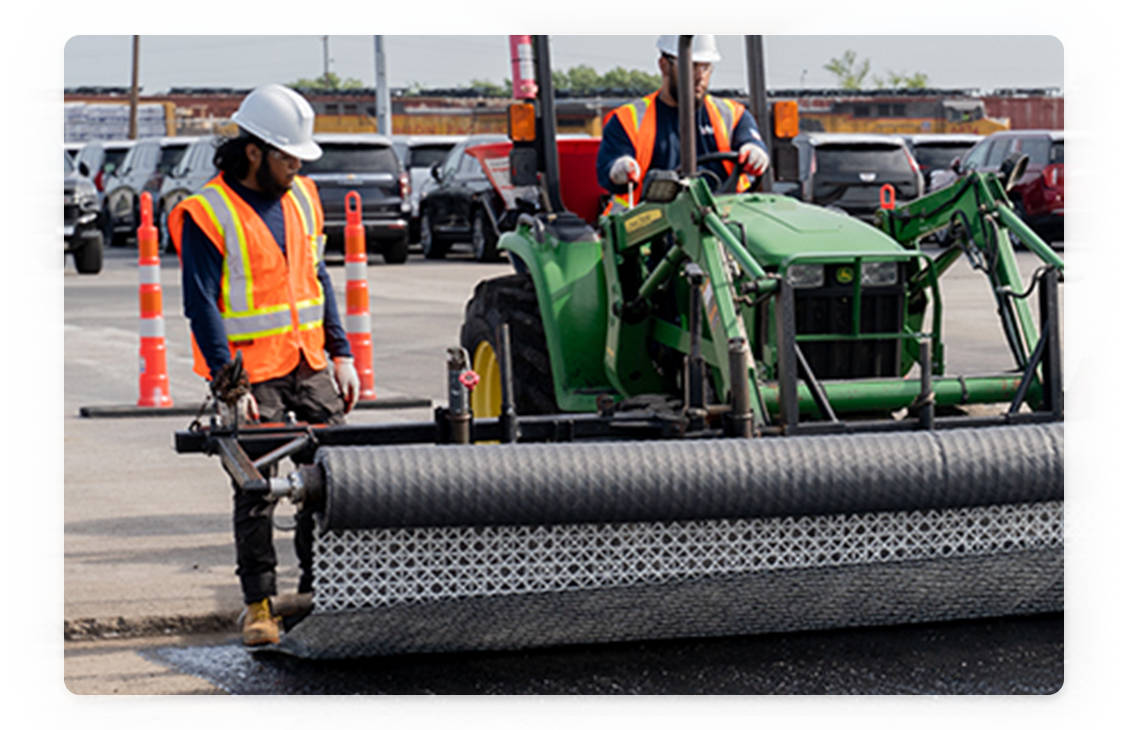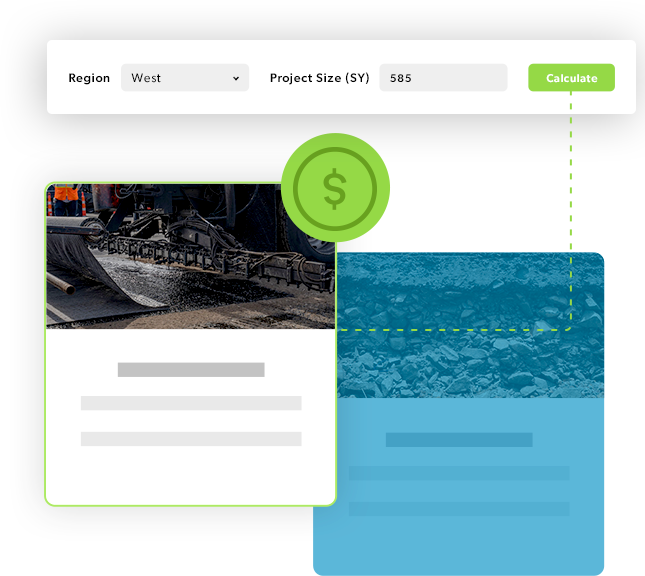
How Geosynthetics Can Improve Your Next Roadway Stabilization Project
What if you didn't have to waste time, energy, and money trying to perform repairs and upgrades to your roadway stabilization projects? What if, instead, you had the power to reduce cost and material by 20 to 40 percent, improve construction speed, and provide profitable solutions by saving on recurring expenses, such as time-consuming and costly excavation-and-replace with select fill and/or chemical stabilization. Well, the truth is you can, with the use of geosynthetics.
A necessary and indispensable economical solution for stabilizing soil, geosynthetics are planar products manufactured from durable polyethylene or polypropylene polymers used in soil, rock, earth, or other geotechnical/civil engineering-related applications. Their high quality, quick installment, and economic value make geosynthetics an excellent solution for your next civil sitework project. They have become commonplace for solving roadway construction challenges related to subgrade stabilization, separation of roadway components, expansive subgrade soils, and the enemy of all roadway structures- water. Learn more about geosynthetics here.
“Roads wear out from the top down, but fall apart from the bottom up”
- National Association of County Engineers
Drainage
Though most roadway damage is caused directly by vehicle loads and daily temperature variations, the actual problem is the pavement's wear out over time. Critical
damage begins when moisture build-up softens and weakens underlying soils while displacing aggregate in sub-base layers. Moisture build-up occurs because asphalt
pavements are permeable and allow up to half of the precipitation to infiltrate down into lower pavement layers.
Certain geosynthetics allow for the mitigation of moisture build-up within roadway components. These include hydraulically efficient, high-performance geotextiles and geocomposites
designed for roadway loading conditions. Studies confirm that properly designed geotextiles and geocomposites can serve as a capillary break between fine-grained subgrade soils and
aggregate base/subbase materials. Water is the enemy of roadway structures - properly designed geosynthetics for drainage are a proven method to enhance your road's service life exponentially.
Separation
An old adage amongst geotechnical engineers describing the importance of soil stabilization reads, "10 pounds of rock plus 10 pounds of mud equals 20 pounds of mud." Building
roads over soft ground conditions introduce expensive and time-consuming improvement methods, including chemical stabilization and/or excavation and replacement. Properly
designed geosynthetics, such as geotextiles, create a separation layer between soft ground conditions and your expensive, granular base material. In keeping fine-grained
subgrade particles from contaminating your overlying roadway components, the mud stays where it belongs.
Subgrade Failure
Even though asphalt is the stiffest material in a flexible pavement system, it still requires support. When the subgrade or aggregate base fails to deliver the appropriate support,
rutting occurs, creating depressions on the roadway requiring reconstruction. One of the most expensive and complex problems to fix is subgrade failure.
Properly designed geosynthetics, namely geogrids, geotextiles, and cellular confinement technologies, confine aggregate base/subbase materials to bridge over variable subgrade
support conditions. Protecting the subgrade and base with a properly designed geosynthetic has a tremendous impact on roadway sustainability and life cycle cost.
Cracking
Perhaps a lesser-known application of geosynthetics for roadways is for the mitigation and/or prevention of reflective cracking for asphalt overlay applications. Asphalt overlays are
commonly opted for to rehabilitate existing concrete and asphalt pavements. Reflective cracking of underlying pavement distress and/or jointed pavements is a common phenomenon for
overlay projects. This cracking introduces an avenue for moisture to prematurely compromise the intended design life of the asphalt overlay.
The use of asphalt interlayers will help mitigate cracking in asphalt. They add strength to the asphalt to prevent or slow the propagation of cracks and prevent water's intrusion into
the pavement or both, depending on the type of geosynthetic deployed.
Two types of geosynthetics for reducing cracking and water intrusion are high tensile fiberglass interlayers and paving fabrics or a combination of the two. Geosynthetic asphalt
interlayers add tensile strength to asphalt to reduce fatigue cracking and arrest reflective cracking for mitigating their propagation. In combination with adequately designed asphalt
tack coats, paving fabrics establish a moisture barrier to prevent water intrusion. These are proven technologies to extend the service life of asphalt overlay applications significantly.
The benefits of geosynthetics are prominent in the design and construction of all roads, highways, and yards, improving the roadway structure, reducing maintenance cycles, and increasing its lifespan. Geosynthetics for roadway stabilization - including geogrids, geotextiles, and cellular confinement technologies - are proven and cost-effective solutions for a variety of challenging conditions. Their ease of installation reduces variability common to other traditional roadway stabilization methods. Moreover, geosynthetics present owners, engineers, and contractors with sustainable, durable road building solutions. Discover our various geosynthetics solutions HERE
Have a question, give us a call and put us to the test.
GeoSolutions provides dependable results for soil stabilization, earth retention, and soil erosion control projects utilizing geotextiles and geogrids, earth anchors, walls and slopes, turf reinforcement, revegetation, containment and geomembrane liners, and more. Contact Us Now


